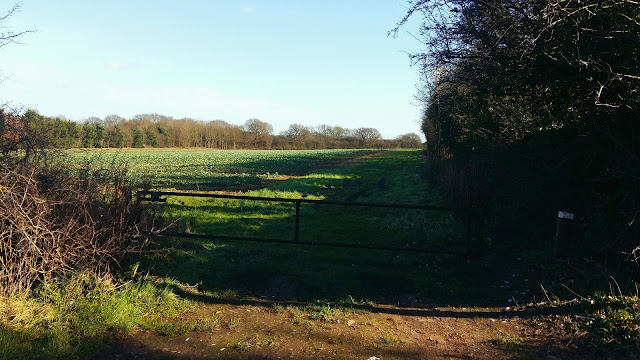Generic Conventions
-Blood
-Vampires
-Slow Motion Editing
-Location associated with death (butchers)
-Weapons (meat hook)
-Blonde, clueless character
-Sense of doom
-Vague references
-Shadowed areas with bright lights (Club)
-Key iconography (fangs)
Sound
-Diagetic atmospheric, electric, synthesized club music.
-Foreign language (vampires stereotypically have Eastern European accents. This also addresses the audiences' fear of what they cannot understand and the unknown.)
-Diagetic, vague dialogue "It's him" makes the audience question the importance of the mystery figure that has appeared on screen.
-'Chomping' sound effect when Blade enters the club.
-Screaming (convention of horror/thriller)
-Non Diagetic, atmospheric, orchestral music when Blade (Protagonist) is introduced, which indicates he is a vital character to the plotline.
The use of diagetic and non-diagetic sound helps to convey the conventions of the horror and thriller genre to the audience. The vague dialogue "Where are we going?" and "Its him!" convey Barthes Enigma code- that the audience are compelled to carry on watching to discover the truth and solve the puzzle of where the two characters are going and the identity of the man wearing sunglasses inside of the vampire cave. Furthermore the atmospheric, non-diagetic music when the movie's protagonist (Blade) enters helps to convey the action adventure genre. The music playing beforehand was electric, upbeat club music and juxtaposes the string/orchestral music that is heard when Blade's feet are first seen in shot. This reveals a change in atmosphere- from energetic and happy to ominous. It causes the audience to feel a sense of anticipation and build up tension, leading to the big reveal of the protagonist.
Camerawork
-Follow/tracking shot of the blonde male as he enters the dancing crowd.
-Close up shot of the blood dripping (and then spurting) out of the sprinklers.
-Zoom onto the rising hands of the crowd (towards the sprinklers.)
-Low Angle shot that pans up from floor level to Blade's torso.
- Shot reverse shot of conversation between blonde male and crimson hair female vampire.
-Long shot/tracking shot following the blonde male and female vampire through the butchers.
The camerawork helps to convey the genre conventions as it shows the audience important details which are necessary to the plotline. For example the pan from the torsos of the dancer inside the club to the sea of hands in the air reveals that something key in the scene is about to happen. The panning shot finishes with the hands taking up the bottom third of the shot and the sprinklers taking up the top third of the shot. This infers that the sprinklers have some significance in the scene, which further relates the Enigma Code. The audience will try and solve the enigma of the importance of the sprinklers before it is revealed on screen, therefore keeping the audience attached to watching the film. The shot then goes to a close up of the sprinklers that are dripping blood drops, which is foreshadowing events to come in the film. The enigma is solved when blood spurts from the sprinklers as the climax of the music is heard, which meets the conventions of tension (the panning shot), blood and the stages of the Enigma code.
Editing
-Fast paced editing when the two focal characters enter the club (dancing crowd shots)
- Slow motion (close up's and mid shots of people dancing.)
-Jump Cuts when the blonde male is being chased through the crowd of dancers.
-Starts in 'Media Res', goes straight to the action with no establishing shot.
The editing techniques are effective as they keep the audience on the edge of their seat, anticipating what will happen next. The fast paced editing joined with the strobe lighting effect makes it seem like time is going by faster. It can also be used to build up tension towards a climactic event. In the club fast paced editing is used when the blonde male and red-haired female enter the club and start dancing. In contrast slow-motion is used when other dancers are shown, which creates an energetic atmosphere. Furthermore the jump cuts that are used when the blonde male is running through the crowd (after the enigma has been solved) are conventions of the horror/thriller genre. Jump cuts are designed to create a massive build up of tension which results in either a climatic or anti-climatic event. Each time a jump cut is used the viewers will have an overwhelming sense of fear and/or relief. The vampires hunting the damsel in distress are introduced through jump cuts which builds up tension and introduces a new enigma- will the damsel escape from the Vampire lair or will the Vampires chasing him catch him? And if they do, what will they do with him?
Mise-En-Scène
-Generic colour scheme of black, white and red.
-Male is blonde and appears to be unaware of the situation he is entering.
-The woman has pale skin and crimson (or blood red) hair, which matches the stereotype that vampires have pale skin due to lack of sunlight exposure.
-Location has obvious links to death.
-Iconography of body bags, corpses and meat hooks.
-Metal gate implies danger and are designed to keep people away and/or stop them getting out.
-Locked door to the vampire lair opens to reveal darkness, which implies travelling into the unknown.
-Strobe lighting in the club.
-Sense of anticipation as the dancers raise their hands towards the sprinklers.
-Lighting reveals the name of the club is "Blood Bath" just as the blood starts spurting out of the sprinklers.
-Blood pours out of the sprinkler system.
-Weapons (meat hooks.)
-Vampire Fangs
-Sense of fear (when the human male is chased through the crowd.)

















































